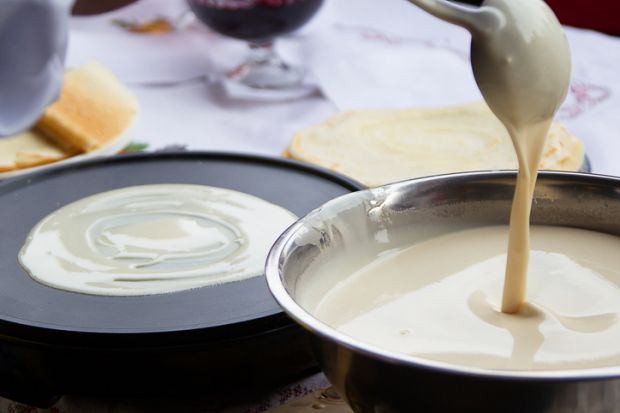Science faculties across the world have been seeking ingenious ways of teaching topics that usually rely on well-stocked laboratories.
At the latest annual meeting of the American Physical Society’s division of fluid dynamics, researchers revealed just how much can be taught – and how much we can learn – by using the materials available in most kitchens.
Roberto Zenit, professor of engineering at Brown University, usually teaches students to measure viscosity by observing how quickly small spheres fall through thick liquids and settle at the bottom. Yet now, with students no longer able to come into the lab, it was just as effective to get them to mix up pancake batter, pour it on to a flat surface and watch how quickly it expanded.
"By measuring the rate at which this blob grows in time,” Professor Zenit explained, “you can back-calculate the viscosity.” Not only does this mean that students “get to feel the viscosity” but even if they make a mistake, they end up with a nice breakfast.
“Kitchen flow experiments are so easy to do,” noted chemical engineer Endre Mossige, a postdoctoral researcher at University of California, Santa Barbara, who organised the mini-symposium. Researchers from the University of Cambridge described their findings about hydraulic jumps – the smooth circles of water, surrounded by turbulence, often seen beneath running taps – which can be studied at the kitchen sink.
“In the kitchen we do a lot with high-interface materials,” added Jan Vermant, professor of soft materials at ETH Zürich. “You have to mix fluids and air and make emulsions, and work with bubbles. This is a fundamental problem of food projects, and one known by chefs all over the world.”
Professor Vermant is an expert on thin films, so he and his team have been studying the stability of foam in beer and bread. Beer bubbles turn out to provide a rich research environment, since they take many forms, behave in many ways and “have all the mechanisms one can design as an engineer”; much the same also applies to bread.
By looking at such phenomena, Professor Vermant went on, “we can mimic those systems and might make foams using the same principles as beer foams”. We could also see practical applications in fields ranging from spray insulation to protective foams for crops.
Register to continue
Why register?
- Registration is free and only takes a moment
- Once registered, you can read 3 articles a month
- Sign up for our newsletter
Subscribe
Or subscribe for unlimited access to:
- Unlimited access to news, views, insights & reviews
- Digital editions
- Digital access to THE’s university and college rankings analysis
Already registered or a current subscriber? Login







